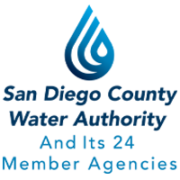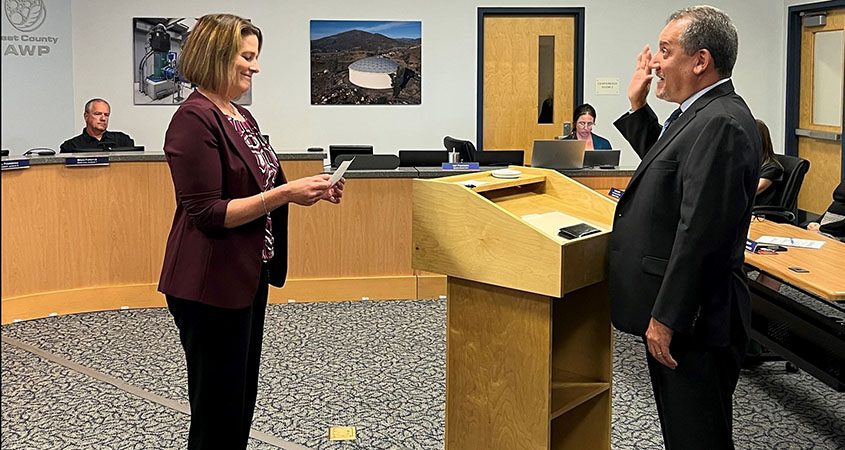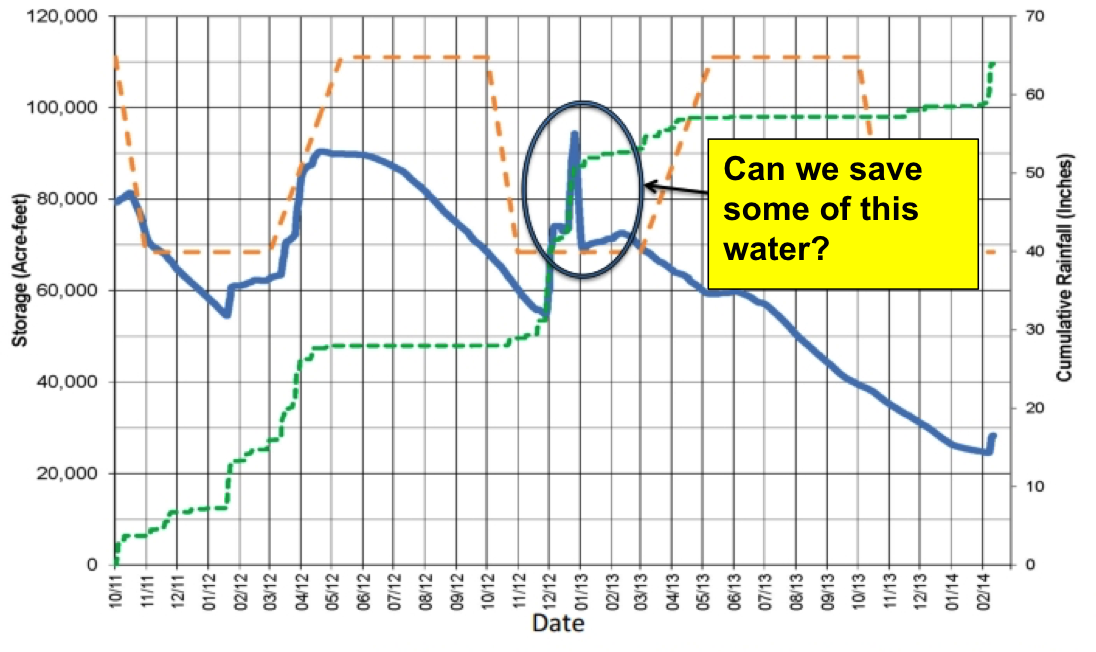October 2, 2023 – Thanks to a decades-long supply diversification strategy and continued efficient use of water across the region, the San Diego County Water Authority announced today that the region has reliable supplies to meet demands in Water Year 2024, which started Oct. 1.
Hydrologists use Oct. 1 to begin measuring the snow and rain that will help carry water users through dry summer months the following calendar year. This fall, El Niño conditions continue to strengthen and could bring above-average precipitation to Southern California. In a recent El Niño forecast by NOAA, there is a greater than 95% chance that El Niño continues across the Northern Hemisphere through the winter into 2024. The chance of a “strong” El Niño is 71%.
“San Diego County continues to have the water necessary to support our $268 billion economy and quality of life for 3.3 million residents,” said Mel Katz, chair of the Water Authority Board of Directors. “We are grateful for the reprieve from drought – but we recognize that dry times will return, probably sooner than later. We are ready when they do.”
Despite significant rain and snow over the past 12 months, longer-term trends indicate a hotter, drier Southwest climate. Across the arid Southwest, water agencies are spending billions of dollars to increase water supply reliability as they balance the costs of investments against the costs of not having enough water for homes and businesses.
Long-term investments and water-use efficiency sustain region
Since the early 1990s, the Water Authority and its 24 member agencies have made major investments in supply reliability, including in the landmark conservation-based 2003 Quantification Settlement Agreement, which provides over half of the region’s water, the building of the nation’s largest seawater desalination plant, and in the maintaining and upgrading of water infrastructure. That strategy has paid off during dry times. Just one year ago, the situation was dramatically different in other parts of Southern California, as millions of residents were reduced to health and safety water rations – though regional investments meant the San Diego region was spared.
Compared to recent years, the new water year begins with improved supply conditions at the Water Authority’s two imported water sources – the Colorado River and the Sierra Nevada. On the Colorado River, a good water year and conservation efforts raised storage levels, prompting the U.S. Bureau of Reclamation to declare that California will not face supply restrictions through 2024.
Meanwhile, in Northern California, Lake Oroville and San Luis Reservoir – two key State Water Project reservoirs – had 2.76 million more acre-feet in storage combined at the end of August 2023 compared to the prior August. (An acre-foot is approximately 325,900 gallons, or enough water to meet the annual needs of three typical single-family households.)
In the San Diego region, water users also benefit from the Claude “Bud” Lewis Carlsbad Desalination Plant, as well as increased water storage levels in many local reservoirs. At the end of August 2023, member agency local storage was up 137,400 acre-feet, or 80%, compared to the same time in 2022. Meanwhile, the Water Authority had approximately 100,000 acre-feet available in emergency and carryover storage. This represents emergency storage for up to six-months and carryover storage to minimize or avoid potential supply cutbacks during periods of drought or other supply shortage events.
For information on water-efficient programs and rebates, go to: www.sdcwa.org/your-water/conservation/.



 Sweetwater Authority Logo 2019
Sweetwater Authority Logo 2019






